Electric Guitar Build
I recently assembled a Stratocaster-style Harley Benton electric guitar kit, which included a few tricky things I had never done (staining and finishing wood, using a jigsaw). I think it turned out pretty great, despite a couple hiccups along the way.
The kit
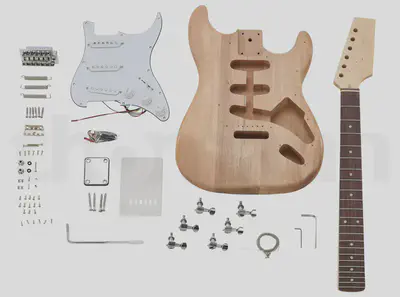
Safety
Stains, finishes, and sawdust can be pretty bad for your lungs, so I did the build outdoors with a dust mask to filter out wood particles. I also used safety glasses while sawing and drilling.
Staining and finishing the body
I picked out some Minwax Espresso stain at Lowe’s to get a nice dark color on the body. I started out staining the back of the guitar to make sure it looked okay. To apply the stain, I first wiped on some pre-stain conditioner with a rag and then wiped on stain. As soon as I stained the back, I noticed that I had left a lot of scratches from sanding (visible in later pics), so I spent longer smoothing out the front once the back stain had dried. Here’s what the front looked like after staining:

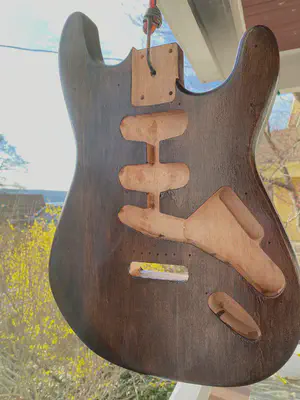
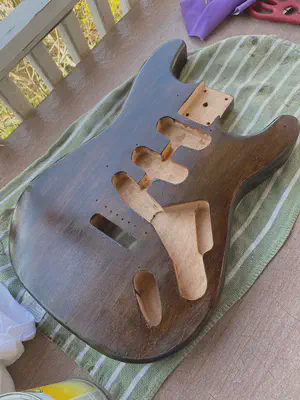
Shaping the headstock
I printed out a headstock template I liked (from a Gibson Firebird–a little narrower than the traditional Fender Stratocaster headstock). I bought a cheap jigsaw and (after reading the manual and watching several instructional videos about safe jigsaw use) started carving out the shape:
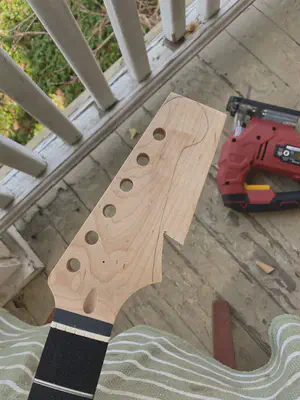
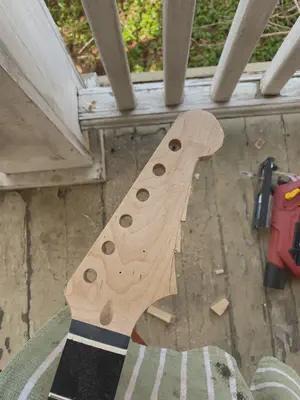
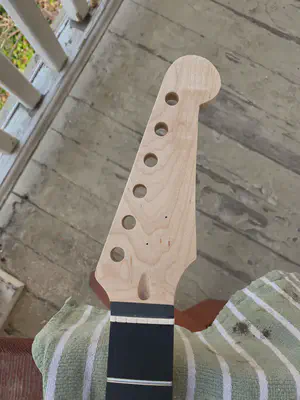
Tuners, bridge, and tremolo springs
Installing the tuners was straightforward–just some screws and nuts:
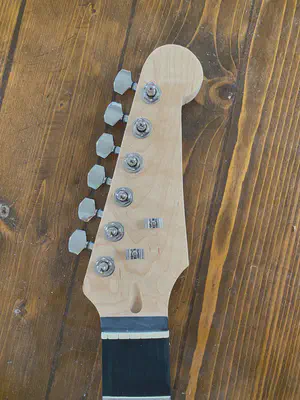
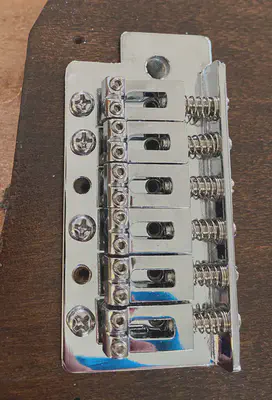
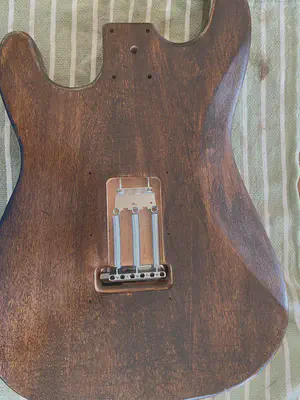
Electronics
Next, I attached the pickguard (with pre-installed pickups, volume/tone knobs, and switch):
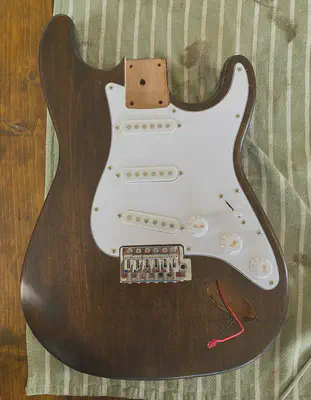
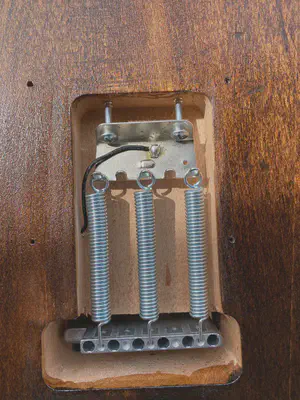
Neck and backplate
Screwing on the neck and was backplate was straightforward:
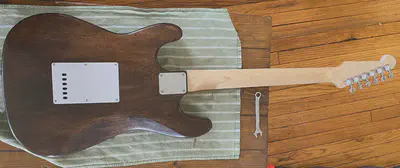
It’s starting to look like a guitar!
Installing strings
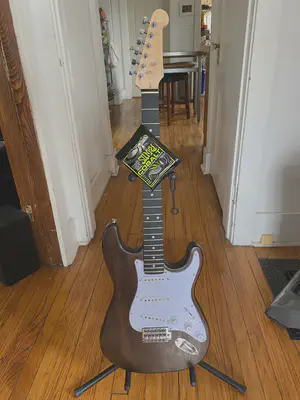

I swapped out the button so it matched the other 5 tuners. The replacement is actually considerably nicer, so tuning the low E is a much better experience than tuning the other strings (the stock tuners have a lot of play and uneven resistance when turning, but they’re certainly usable). The tuners are my first planned upgrade.
The final product
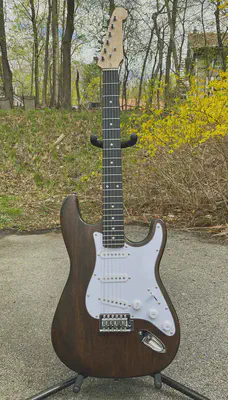
Update: I replaced the stock electronics (pickups, pots, switch, and jack) with a loaded pickguard from a Fender Player strat–a huge upgrade in quality and tone! I also added locking tuners and a custom waterslide decal. Here’s a more recent recording with the guitar: